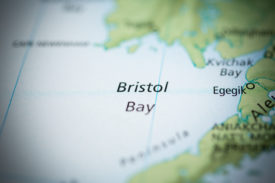Three strong and informative pieces on Oregon’s battered Klamath River ran in Sunday’s papers. All of them, especially an article in the Washington Post, are worth reading.
Both the Oregonian and the San Francisco Chronicle frame their stories around the economic impacts of the Klamath situation: How the depleted and polluted river—which the Chronicle says may be the West Coast’s sickest—has offered up a record low of chinook this year, which could lead to a ban on fishing.
Last week, hundreds of fishermen from Santa Rosa, California to Astoria, Oregon protested the proposed ban. Oregon congressman David Wu threatened to dump smelly salmon carcasses on the steps of federal agencies in Seattle, and Oregon Gov. Ted Kulongoski tabled an emergency summit on the situation. He plans to seek disaster aid for the fishermen if the ban goes through (and shore up support as he faces an increasingly difficult reelection fight). The economic cost for Oregon alone could total $40 million.
The Washington Post approaches the story from a hopeful angle. “For the first time in the nearly eight decades since the river was dammed, Indians and commercial fishermen, environmentalists and federal fish scientists agree that there are sound reasons to believe in the comeback of a river that once supported the third largest salmon runs on the West Coast.”
Amidst the fishing commotion, as the Post explains, two decisions came down from the federal government last week that bode well for the future of the Klamath and all who depend on it. In crisis lies opportunity, as it’s said.
Finally, an interesting bit of trivia about the Klamath:
In 2002, the Post reports, Karl Rove was instrumental in making sure the river irrigated drought-stricken crops, which led to low flows, which led to massive fish kills, disease and low spawning, which means less chinook for everyone now.
Former Tidepool publisher Seth Zuckerman provides useful insight into the Klamath’s woes here.
P.S. – Tidepool.org is Northwest Environment Watch’s daily online news service. Sign up here.






